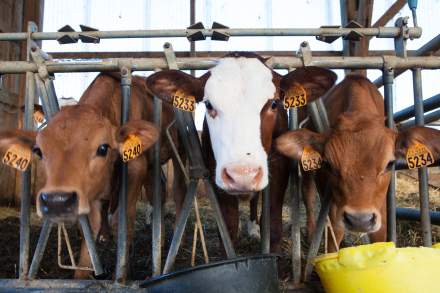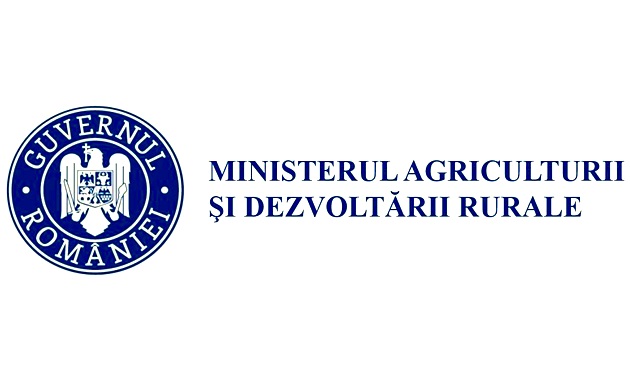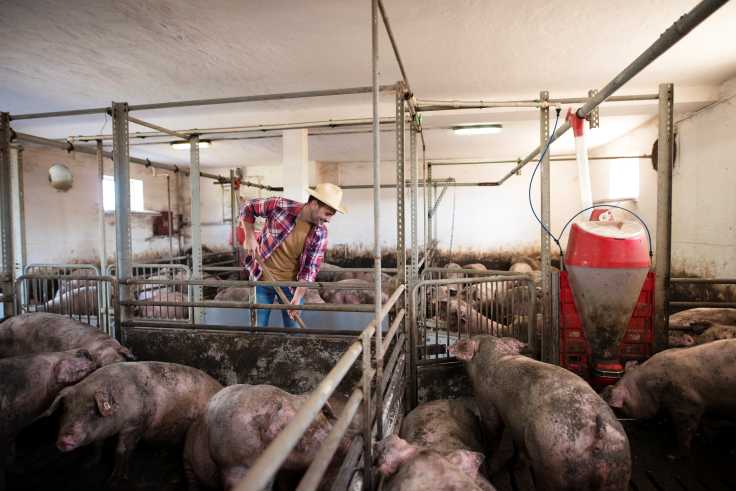
(Author: Ing. Tehnologist Cristina Delia Gavriluţ) Harmlessness is a basic principle when it comes to food, regardless of the branch to which they belong or whether animal origin or vegetable. Consumer health and safety should be a priority for any processor in the food industry, because the appearance of any kind of illness or side effects from consumers is not only prohibited by law in all countries, but entails destroying his reputation, because violates fundamental ethical principles. Raw material Handling However, in the food industry we are dealing with raw material, which, by its composition and chemical structure is perishable within a shorter or longer period, depending on the case. It is therefore necessary to treat food and raw materials, before being put on the market and consumed. The most common method is the thermal treatment of foods, namely pasteurization or sterilization. The milk and dairy industry is one of the food industry branches where heat treatments are absolutely required to ensure harmless and high quality of finished products. But recent research has revealed that, during thermal treatments, chemical components of milk undergoes certain physical and chemical changes that influence ultimately its organoleptic and technological characteristics. Thus, keeping milk at temperatures above 50-60°C for a long time causes changes in its taste because of lactose caramelization, the principal sugar from milk, as well as the denaturation of proteins that precipitates under the form of caseinate. These shortcomings not only make the milk and its derivatives being undesirable for consumers, but can also damage the dairy factories installations, maintenance, refurbishment and repairs of which are costly. For these reasons, the trend is to find new ways of treating milk, less invasive and harmful ways, but they must provide the same antimicrobial preservative as conventional heat treatment of pasteurization or sterilization, of course, with advantageous costs for processors . Among the new methods that have been tested in recent years which slowly make their entrance in the market place, we mention the milk treatment with UV, with X-ray, through IPL method or bacto removal. In the next paragraphs, there will present some of them, focusing on treating milk with UV rays, this method is accepted both by the EU and U.S. legislation, as well as by other states in other parts of the world. Treatment with electromagnetic radiation Milk treatment UV rays involves the use of X-rays, which are actually electromagnetic radiations with a wavelength smaller than the radiation of light perceived by the human eye. UV rays have a wavelength λ of up to 380 nm and a frequency of 300-789 Hz, thus being close to the rays perceived by human eye at a value of λ corresponding to the purple light. In nature, the main source of UV light is the sun itself, but there are methods of producing UV rays using lamps and systems specially developed for this purpose, such as lasers or UV lights. Initially, the UV rays were used for water treatment, and then juices, but in recent years it was discovered that rays with λ between 240 and 280 nm can be used successfully to treat milk. This spectrum acts on microorganisms at the molecular level, resulting in some modifications of DNA and / or microbial RNA that do not allow the development and propagation of yeast, bacteria and viruses in milk. Sterilization with UV rays is applicable not only to the milk itself, but also on work surfaces, the UV lamps can be used successfully for this purpose, but it is recommended to use this method of sterilizing work surfaces in combination with at least another for that the results to be 100% satisfactory. Unlike beer or fruit juice that may be turbid due to pulp or yeast content and because they are colored, milk is a clear liquid with no deposits and with white color. These are major advantages that milk presents to other liquid food products because it is known that, among all colors of the visible spectrum, white is the color that absorbs the largest amount of UV rays. So, when milk is treated by this method, it absorbs up to 90-96% of rays emitted by the lamp, bacteriostatic and bactericidal effect being significantly higher than other drinks. As a means of preserving milk, UV rays can be used alone or in combination with a short pasteurization at low temperature. Reducing psychotropic bacteria In 2006, a team of scientists from Oregon has conducted an experiment on the effects of UV rays on milk quality, under qualitative and sensory aspects. The results were more than satisfactory, in that UV treatment reduced the amount of psychotropic, coliform and thermo resistant bacteria from raw milk, with particularly dramatic effects on E. coli. The best result was obtained for coliform bacteria, followed by psychotropic ,respectively thermo resistant bacteria. In the case of sporulated forms, the results were not as satisfactory. The shelf life of the treated milk was 21 days, indicating that a short pasteurization was applied at low temperatures. Regarding sensory aspects there were observed some changes in the products taste and aroma, but tasters did not consider the treated milk as one with bad taste or repulsive, the main change being the slightly oxidized taste. Based on observations, U.S. researchers concluded that this method is recommended when you want to treat cold raw milk (without heat treatment) or to reduce the number of bacteria that are not susceptible to heat treatment, and to ensure high quality milk in those parts of the world where refrigeration of farm milk is not possible or too expensive.On another wavelength Because of the benefits that this method presents, many companies specializing in the manufacture and distribution of equipment for the dairy industry have developed special line of milk sterilization by UV method, many of them bringing innovations in this field from year to year. An example is a Dutch company, market leader in the segment of rotary filling systems for liquid food industry, which has developed a new UV sterilization of milk using a new wavelength that appears to be more efficient than existing UV sterilization methods as far. The principle on which the unit operates is based on applying a wavelength that almost doubles ultraviolet absorption by the microorganisms existing in the treated milk, removing also the problems caused by too long exposure to UV (the oxidized flavor). The method has proved effective on a wide range of microorganisms, including those of the genus Bacillus, normally quite resistant to UV light exposure. Basically, the system combines two types of specialized lamps, each of them acting on certain microorganisms, resulting a much larger number of viruses, bacteria and yeast inactivated than the traditional lamps. This method can be used not only for sterilizing the milk, but also the packaging for milk. X-rays are made to work Another alternative method of milk treatment, but much less studied and used than the UV method is based on the use of X-rays, known as Röntgen rays. They have a wavelength λ ranging from 0.01 to 10 nanometers (which is lower than that of UV rays), corresponding to a frequency of 30 pentahertzi to 10 exahertzi. There are no natural sources of X-rays, these are generated by fluorescence using specialized equipment containing rhenium, molybdenum and tungsten. Due to their ability to penetrate soft tissue, they are used in medicine, but in last decades there have been found other uses for X-rays, including food sterilization an irradiation, including to milk. Food irradiation is performed using X-rays, or gamma rays. In the case of milk and dairy products are used only X-rays. The method consists in subjecting milk to a given dose of X-rays on a period of time, resulting in slowing or stopping the growth process and growth of pathogenic microorganisms. This effect is achieved due to the destruction of microbial DNA under the action of radiation far beyond its ability to recover, and therefore microorganisms can not multiply, inhibiting the process of cell division. Basically, the microorganisms concerned stop any activity related to reproduction and / or maturation, and, in some cases, they even die, if there is a sufficient amount of radiation. Besides this, the method is applicable in the case of sporulated forms, aggressive yeasts and dangerous viruses, as well as insects, and protozoa that may exist in raw milk. The procedure is safe for food and consumer There is some controversy regarding this method, because being a new one, the public opinion is not informed of what is happening during the process, the tendency is to associate with the nuclear industry, which is totally wrong. This method is not dangerous to consumers, because milk or any other food treated in this way does not become radioactive, the particles themselves that transmit radiation are not radioactive. Controversy related to this method lies in the debate on chemical and sensory changes that occur in the process as energy is much higher than for conventional heat treatments. Studies have shown that the method is particularly effective in inactivating and eliminating pathogenic bacteria of the genus Shigella, Salmonella, Escherichia, respectively Lysteria. This is surprising, given that these are bacteria resistant to conventional heat treatments, especially Lysteria being known outbreaks of listeriosis occurred even after the milk has been pasteurized. Bacteria of the genus Chronobacter were inactivated after irradiation up to an undetectable level. Therefore, the method is very effective, which is why it is now accepted in over 50 countries around the world. The main disadvantage is the high cost of this system of milk sterilization, the investment is somewhere between 1 and 5 million, depending on certain conditions. Apart from this, the negative reaction from the public that associates X- rays radiation with nuclear industry is an impediment for this method of sterilization to be used on an industrial scale. Therefore, alternative heat treatments exist, but it depends, ultimately, on consumers, meaning that traditionalists often have no access to information, and they will tolerate much harder the alternative milk sterilization treatments, but w hope that with the time, things will change.



